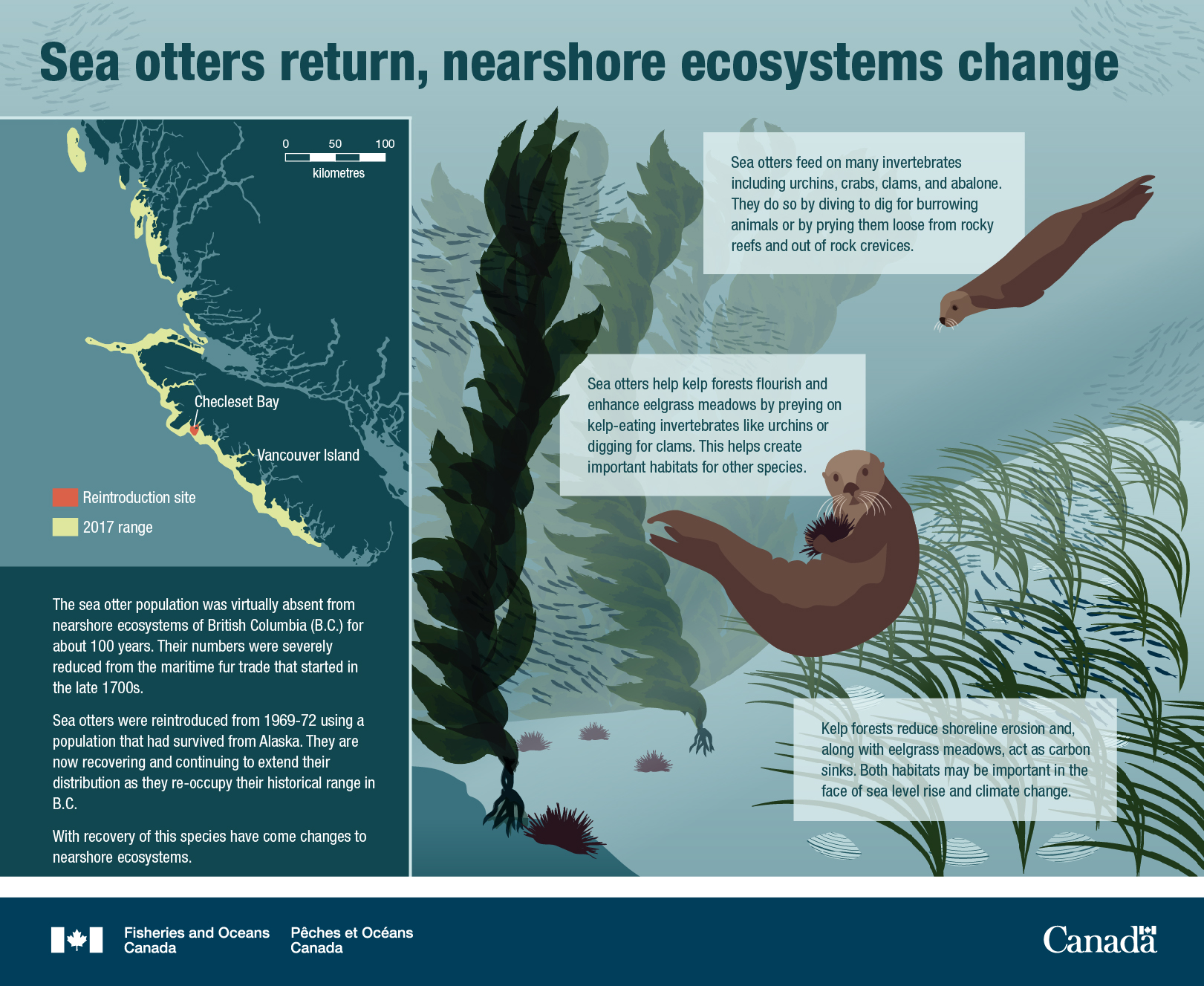Canada’s Oceans Now: Pacific Ecosystems, 2021 - Sea otters return, nearshore ecosystems change

Description: Canada’s Oceans Now: Pacific Ecosystems, 2021 - Sea otters return, nearshore ecosystems change
An infographic showing the return of sea otters and their impact on nearshore ecosystems. At left there is a map of Vancouver Island and the Central Coast of B.C. Yellow areas along the west coast of Vancouver Island and up the Central coast indicate the 2017 range of sea otters. A red area at Checleset Bay on the northwest coast of Vancouver Island shows the reintroduction site. This shows that after being reintroduced, sea otters moved into new areas. At right there is an illustration of sea otters interacting with the marine environment. One is diving down, another is holding a sea urchin. Both are surrounded by eelgrass, forage fish and kelp forests.
Sea otters return, nearshore ecosystems change
The sea otter population was virtually absent from nearshore ecosystems of British Columbia (B.C.) for about 100 years. Their numbers were severely reduced from the maritime fur trade that started in the late 1700s.
Sea otters were reintroduced from 1969-72 using a population that had survived from Alaska. They are now recovering and continuing to extend their distribution as they re-occupy their historical range in B.C.
With recovery of this species have come changes to nearshore ecosystems.
- Vancouver Island
- Checleset Bay
- Reintroduction site
- 2017 range
Sea otters feed on many invertebrates including urchins, crabs, clams, and abalone. They do so by diving to dig for burrowing animals or by prying them loose from rocky reefs and out of rock crevices.
Sea otters help kelp forests flourish and enhance eelgrass meadows by preying on kelp-eating invertebrates like urchins or digging for clams. This helps create important habitats for other species.
Kelp forests reduce shoreline erosion and, along with eelgrass meadows, act as carbon sinks. Both habitats may be important in the face of sea level rise and climate change.
Related links
- Date modified: